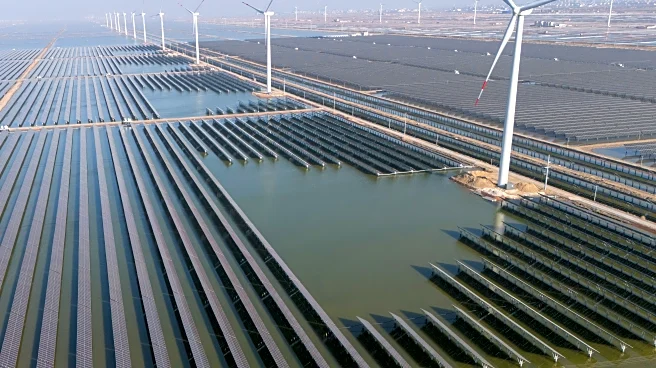What's Happening?
Researchers are exploring ultra-thin materials known as two-dimensional (2D) materials to enhance renewable technologies. These materials, particularly MXenes, have the potential to convert air components
into ammonia, a key ingredient in fertilizers and transportation fuels, through cleaner methods. The study, led by chemical engineering professors Drs. Abdoulaye Djire and Perla Balbuena, challenges traditional beliefs about catalyst design, focusing on the atomic properties of MXenes to improve performance. The research, supported by the U.S. Army DEVCOM ARL Army Research Office, aims to achieve atom-by-atom control of energy conversion processes.
Why It's Important?
The development of MXenes represents a significant advancement in materials science, offering a sustainable alternative to traditional catalysts used in chemical production. This innovation could lead to more efficient and environmentally friendly methods for producing essential chemicals, reducing reliance on fossil fuels and decreasing greenhouse gas emissions. The ability to fine-tune MXenes for various applications may drive progress in renewable energy technologies, potentially transforming industries such as agriculture and transportation.
What's Next?
Further research into MXenes and their interactions with polar solvents could yield major advancements in green chemistry. The ongoing exploration of these materials may lead to new applications in energy conversion and storage, influencing future developments in renewable energy technologies. Collaboration between researchers and industry stakeholders will be crucial in translating these scientific findings into practical solutions for sustainable energy production.
Beyond the Headlines
The study of MXenes highlights the importance of interdisciplinary research in addressing complex environmental challenges. The focus on atomic-level control of materials underscores the potential for breakthroughs in nanotechnology and materials science. Ethical considerations regarding resource use and environmental impact will be central to the development and implementation of these technologies.












